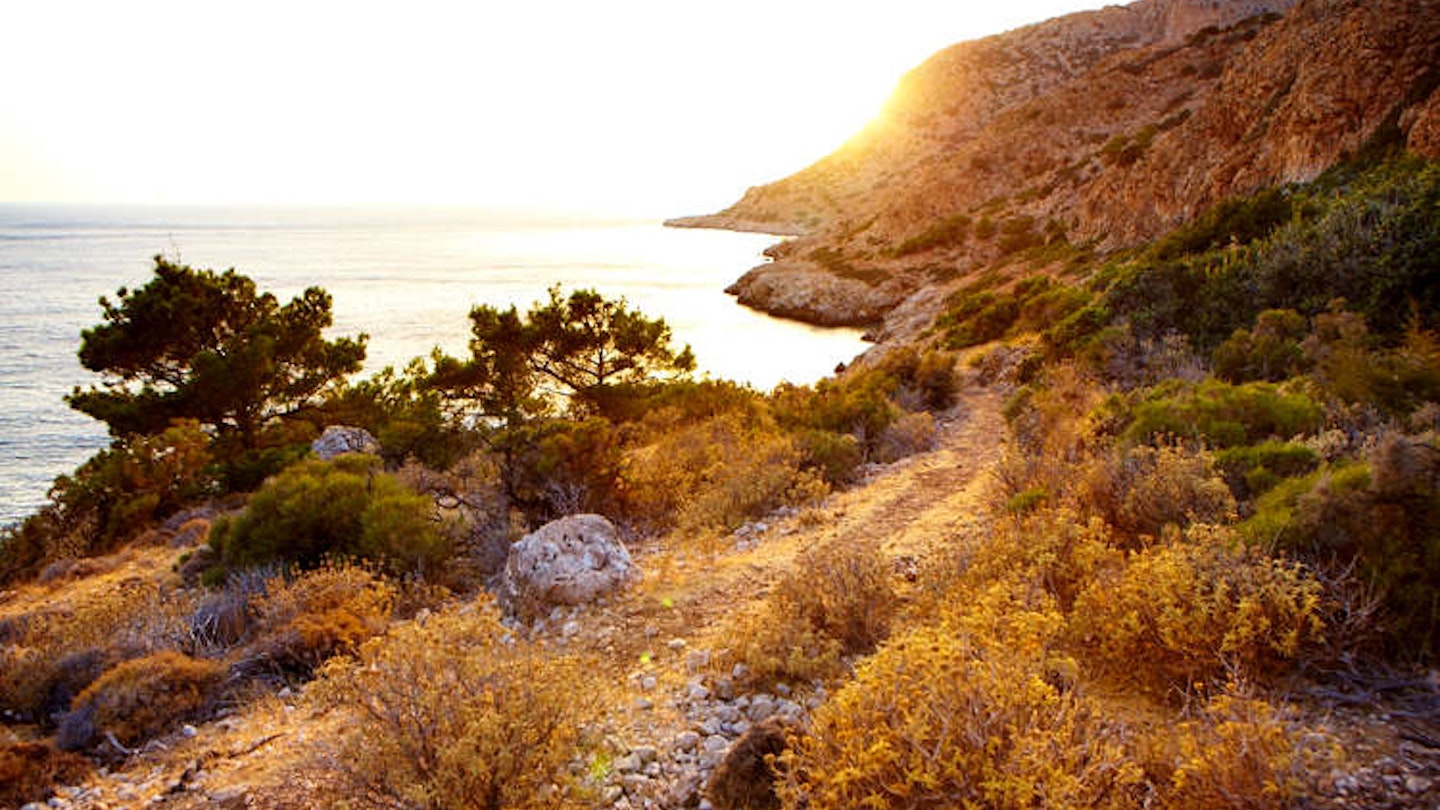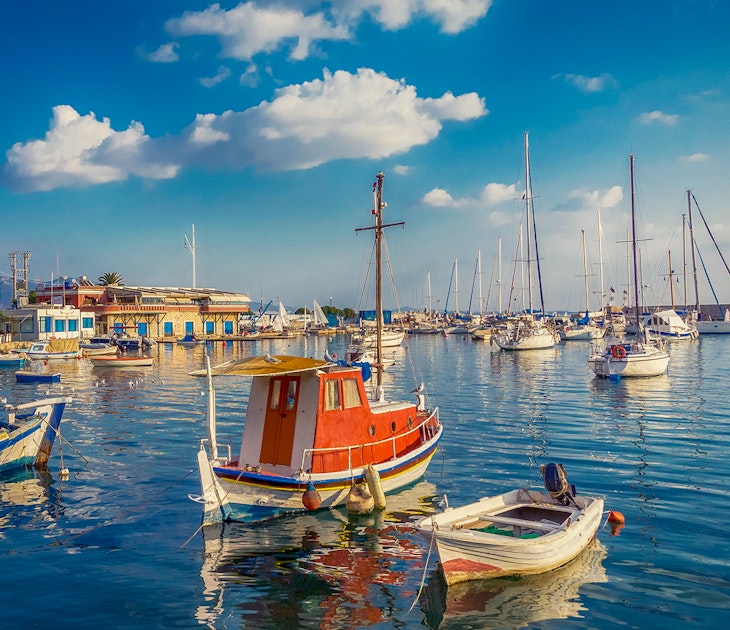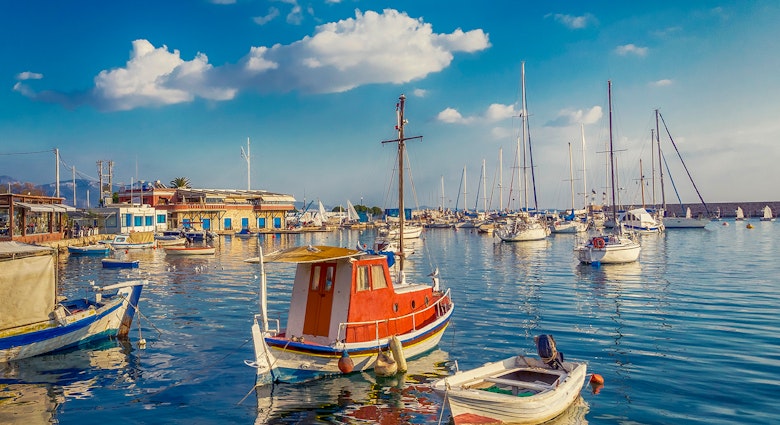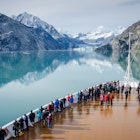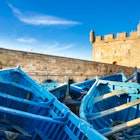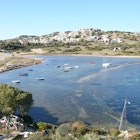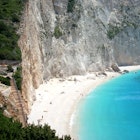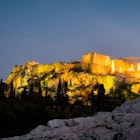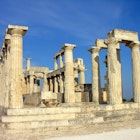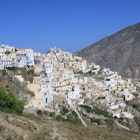Island-hop your way around the Dodecanese Islands in the southeastern Aegean Sea, from the raw natural wonder of Karpathos to the holy sites of Patmos. In this excerpt from a Lonely Planet Traveller magazine article, we discover medieval castles, walled cities and exquisite beaches.
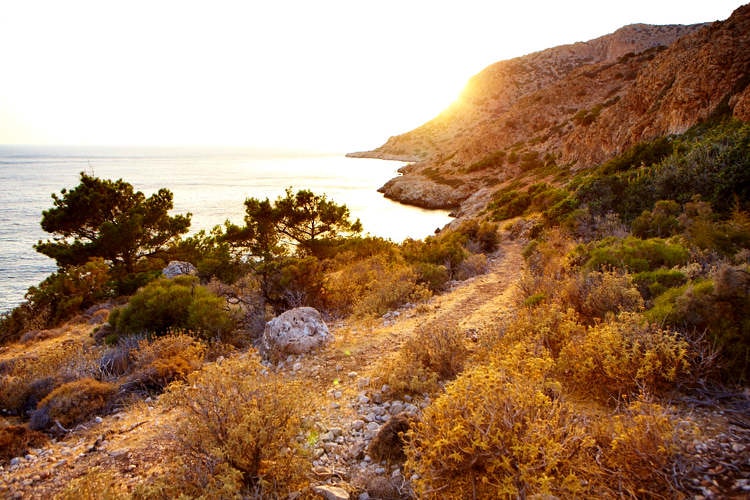
Karpathos: best for activities
Despite its diminutive size, Karpathos hits big on the seeing and doing front, with surfing beaches, walking trails and ever-changing scenery. Constructed centuries ago near the edge of the cliffs, Karpathos’ whitewashed windmills were built to last. The wind rushes along the footpath before them, muting the gentle snapping sound of their sails and of the waves crashing against the cliff face 200m below. The island’s western frontier, surrounded by the temperamental Aegean Sea, invokes a sense of awe that only nature can deliver.
Karpathos is small, yet it manages to squeeze in a great variety of landscapes, making it perfect for outdoor pursuits: world-class surfing beaches, roads with soft hills ideal for cycling, and shimmering, glass-blue water for swimming and snorkelling.
Get there: Take a 70-minute flight, or the rather more leisurely 16-hour ferry, from Athens on the Greek mainland.
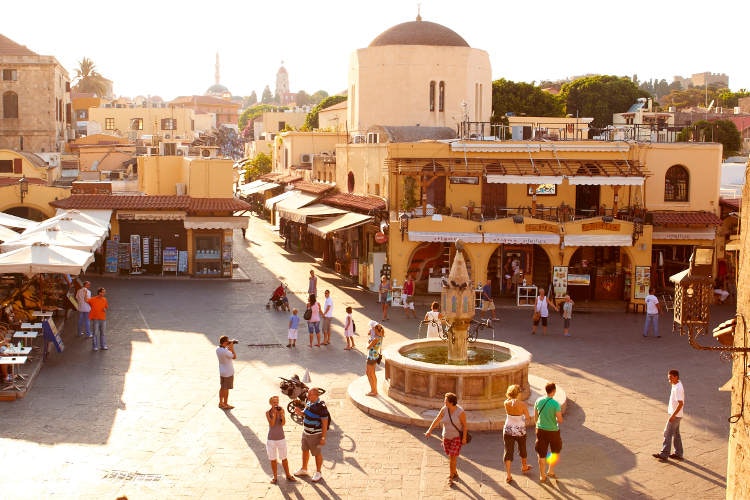
Rhodes: best for history
Alleyways twist and turn, leading deep into the labyrinth of Rhodes’ walled Old Town. Stone buttresses arch overhead as narrow passageways open on to leafy squares. Medieval mansions stand next to Byzantine chapels, Turkish baths and turreted palaces. All that’s missing are armoured knights galloping past and a Gothic princess crying out from a tower window. The museums are excellent, but the history of this place can be felt in the buildings, squares and streets themselves.
Get there: Take a 35-minute flight or a five-hour ferry from Karpathos, heading northeast across the Aegean Sea.
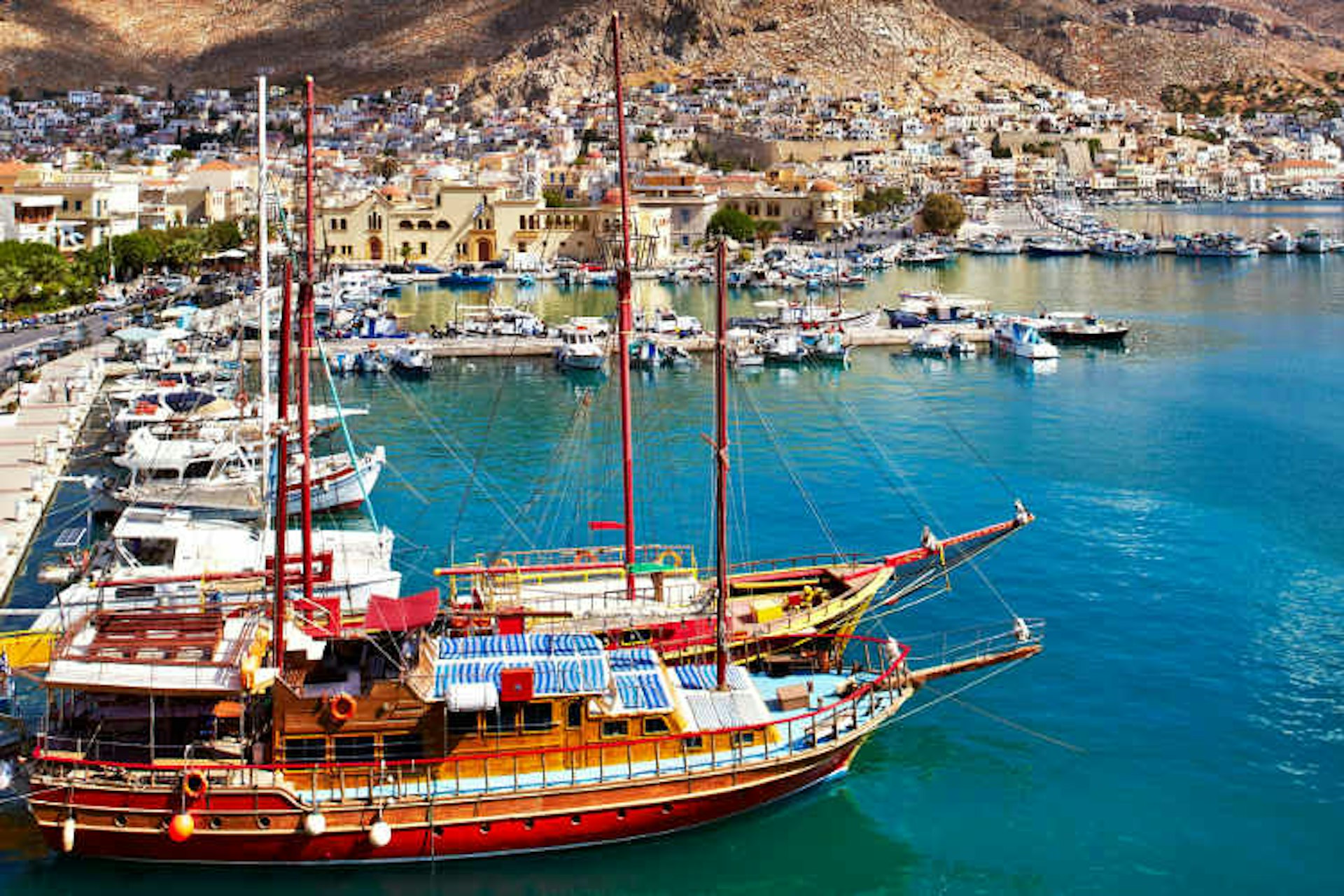
Kalymnos: best for life by the sea
A boat chugs into Pothia harbour, colourful paint peeling from its railings and the taste of salt heavy all around. It’s the perfect vantage point to see the spirit of Kalymnos bursting forth at its most lively. The air is filled with the sounds of fishermen unloading their boats, of dishes banging at the waterside cafes, and of mopeds zipping past at full throttle.
Sponge diving has been the main industry of Kalymnos since the days of Plato and, at heart, the people here still belong to the sea. Each afternoon, next to Pothia’s harbour, sponge divers haul in their catch. Facing the sea, backs leaning against the dazzling yellow cathedral, they pull the sponges from large nets and lay them to dry with an ease born of incalculable experience.
Get there: Curve around the island of Kos, heading northwest on a three-hour speedboat trip from Rhodes.

Leros: best for slowing down
Time goes slower on Leros. As the ferry sidles up into Agia Marina, next to faded fishing boats and dozing taxi drivers, it’s almost possible to feel the mellowness in the warm air. There are no big-hitters, only a couple of museums, a few ruins and a bit of diving. The draw isn’t in the doing; Leros is the ideal location to just chill out.
Narrow roads wind their way between beautiful pastel-hued buildings. Traditional bakeries display temptingly sticky sweets. The 10th-century Pandeli Castle is perched like a sandcastle at the top of town, catching the sunset on its stone walls and promising 360-degree views to those who can bring themselves to leave their patio chair and climb to the top.
Get there: Kalymnos’ chilled-out northeastern neighbour is just 50 minutes away by high-speed ferry.
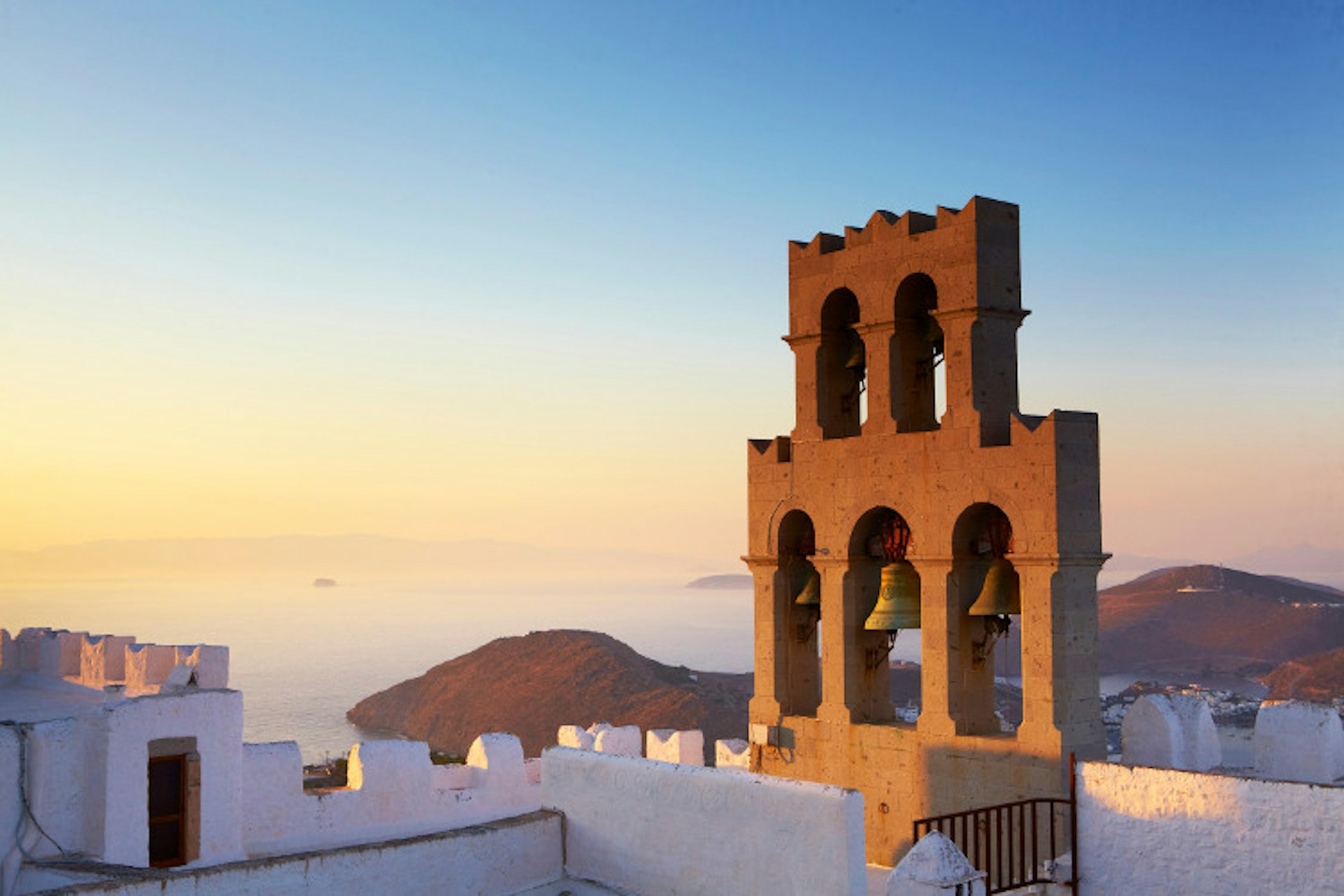
Patmos: best for culture
The air is filled with heady plumes of incense, bells are tolling and the gathered devotees begin a chant that echoes under a lavishly decorated ceiling. This is the Monastery of St John the Theologian, a fortified Orthodox priory perched high on a hill in the old town of Hora. For centuries, Patmos has lured religious travellers, and countless Christian pilgrims still come from all across the world to see the island, considered one of the most sacred sites outside Jerusalem.
The reason is just down the hill: the Cave of the Apocalypse. It was here that the exiled St John of Patmos ensconced himself in 95 AD and wrote the Book of Revelation. In the low ceiling of solid rock is a triple fissure, through which the voice of God is said to have dictated the script. The islanders of Patmos are a mix of proud locals and long-term expats, most drawn here by a desire to express themselves spiritually or artistically. Shops selling handmade jewellery, paintings and other crafts line the alleys.
Get there: This Dodecanese spiritual centre is 45 minutes by speedboat from Leros, northwest across the Aegean Sea.
This article was first published in March 2012 and last updated in April 2015.
